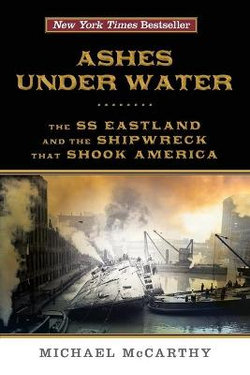

Ashes under Water 1
The S. S. Eastland and the Shipwreck That Shook America
OFF
RRP means 'Recommended Retail Price' and is the price our supplier recommends to retailers that the product be offered for sale. It does not necessarily mean the product has been offered or sold at the RRP by us or anyone else.
- ISBN:
- 9781493009404
- 9781493009404
- Category:
- Maritime history
- Format:
- Paperback
- Publication Date:
- 01-05-2018
- Language:
- English
- Publisher:
- Rowman & Littlefield Publishing Group, Incorporated
- Country of origin:
- United States
- Dimensions (mm):
- 230.63x150.62x18.8mm
- Weight:
- 0.03kg
This title is in stock with our Australian supplier and should arrive at our Sydney warehouse within 1 - 2 weeks of you placing an order.
Once received into our warehouse we will despatch it to you with a Shipping Notification which includes online tracking.
Please check the estimated delivery times below for your region, for after your order is despatched from our warehouse:
Click on Save to My Library / Lists
Click on My Library / My Lists and I will take you there
Reviews
1 Review
This is my first book review so please bear with me. I will begin my review by relating to the author whereby I inadvertently came across the story of the SS Eastland purely by chance. I wanted to see the film “1917” at the nearby Eastland cinemas and a quick google search of movie times not only provided me with what I was searching for but much, much more. In a similar manner to the author, my reaction was one of initial bewilderment regarding how I knew nothing about a disaster which killed more passengers than the Titanic. After reading the Wikipedia article, I felt that this disaster demanded my attention and I proceeded to purchase this book. Ironically, the remote possibility of me finding this is connected to the actual historical events because it was almost certain that this ship was not even going to be christened the SS Eastland.
Anyway, I better get started with the actual review. I read the book cover to cover and felt the author does an excellent job in providing enough detail and scope about the events at the time of the disaster, without getting bogged down in unnecessary or technical detail, which he makes abundantly clear exists in the reference material he collected over 10 or more years. The decision by the author to write small chapters (62 chapters covering approximately 250 pages, or 4-5 pages per chapter) may have helped achieve this outcome. The author deliberately decided to focus on a small number of individuals in the narrative, including choosing a single family to represent the passengers affected by this disaster. He also wove in facts about other victims that helped exacerbate scale of such a great loss of life.
However, the story is not limited to the ship and that tragic day. It is also a rich story about Chicago at the turn of the 20th century, including areas surrounding the Great Lakes which were navigated by the SS Eastland and other steamers. It also provides insights in to everyday working life in an industrial heartland, discusses institutional and societal roles within the era, highlights other disasters (on land and on sea) that are likely to have thick books written about them (of which I noted a couple of interest to follow up on), and provides an entire section on the legal case surrounding the aftermath of the disaster. To me, reading this book provided me with that amazing feeling of travelling back in time.
As one of my friends put it to me after I finished, it was bittersweet to end this book. Though whilst all stories come to an end, this book has provided me with two new disaster stories to read between its covers that have gone straight on my wish list. I appreciate that the book has had this effect of spawning further reading for me.



Share This Book: